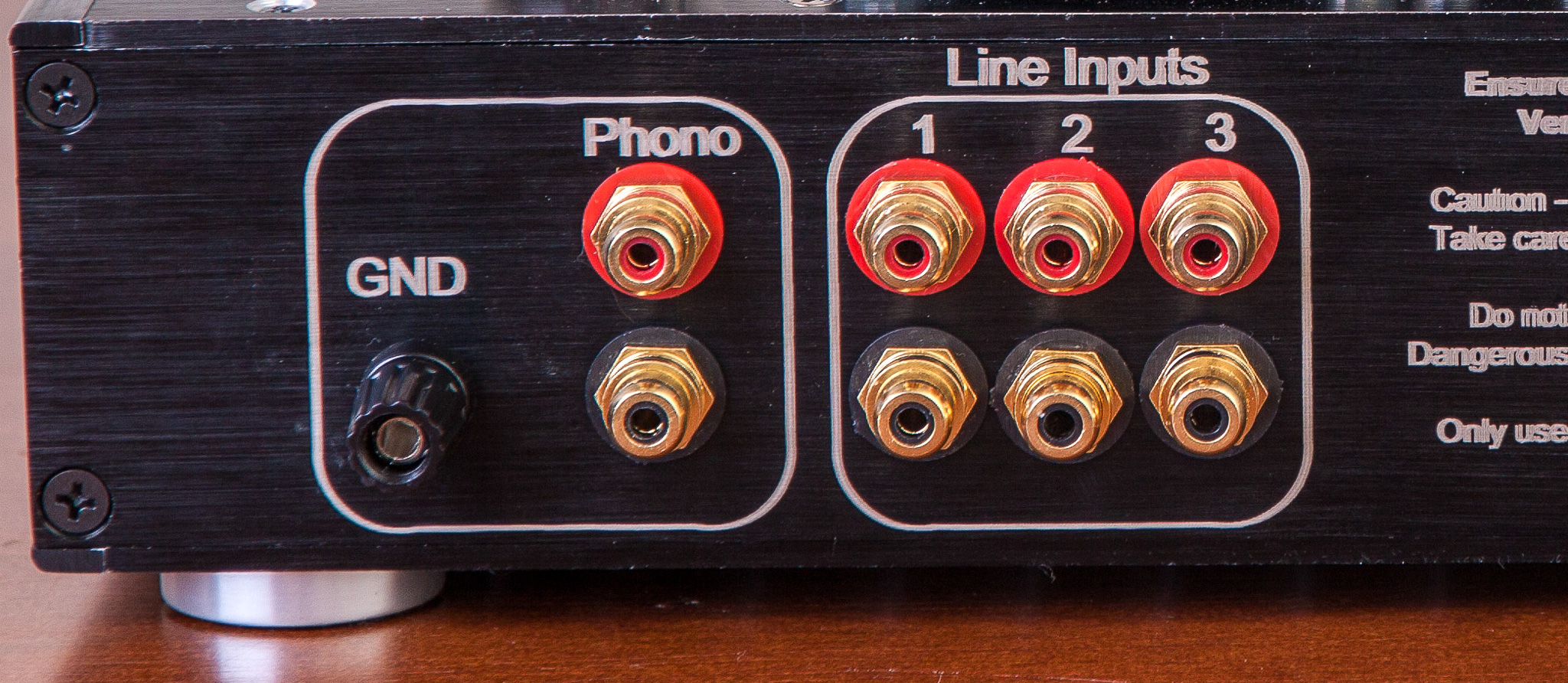- If you want to connect a digital source (such as a CD player, Chromecast, Digital Media centre, etc) you need to connect that to a Line-level input
- If you want to connect a turntable, you (probably*) need to connect that to a Phono input.
To understand this, we need to get a little bit technical.
The signals you feed into your amplifier, created by your source component, have to be at a specific level, which we measure in terms of voltage. (To over-simplify, this is how “big” the signal is)
Pretty much all source components you can think of (eg. CD/DAC, Streamers, older sources like tapes, etc) all put out the same size signal: it has a voltage of up to 2 volts for the loudest passages in the music. This size of signal is called “Line level“.
A turntable on the other hand gives out a much lower signal – only five thousandths of a volt (5 millivolts). So the turntable’s signal is special, and needs extra amplification.
We accomplish this by having a separate input on the back of the amplifier specifically for the turntable, as below:

The signals from this input go to a separate stage inside the amplifier that amplifies it up to line-level. This is called a “phono stage” and it’s a standard feature with our preamp and integrated amplifiers
* Some newer turntables have the phono stage built-in, so they can be connected to an amp without a phono stage. This is useful, because a lot of modern gear (like Home Theatre receivers etc) don’t have a phono input.